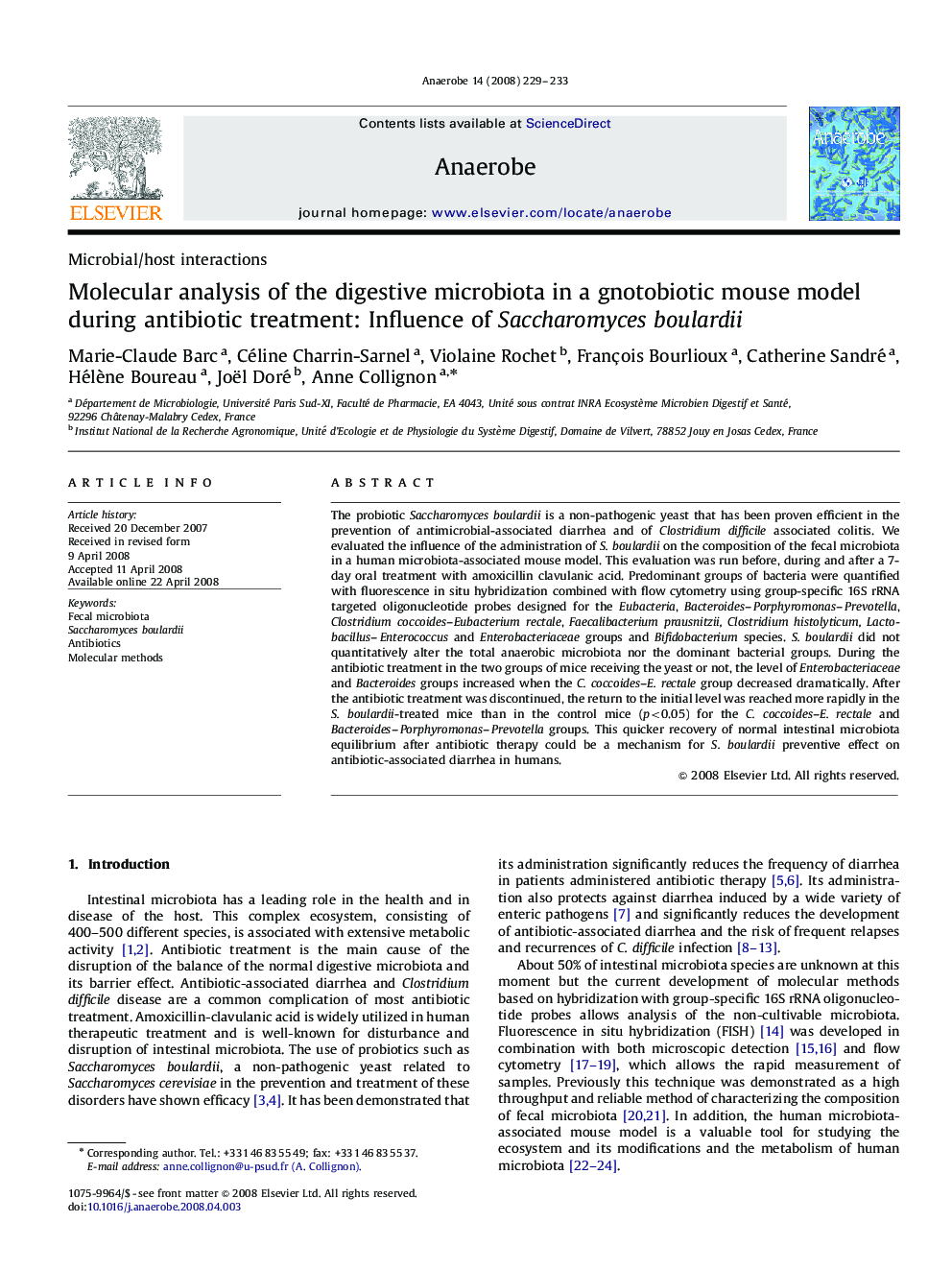| Article ID | Journal | Published Year | Pages | File Type |
|---|---|---|---|---|
| 3395667 | Anaerobe | 2008 | 5 Pages |
The probiotic Saccharomyces boulardii is a non-pathogenic yeast that has been proven efficient in the prevention of antimicrobial-associated diarrhea and of Clostridium difficile associated colitis. We evaluated the influence of the administration of S. boulardii on the composition of the fecal microbiota in a human microbiota-associated mouse model. This evaluation was run before, during and after a 7-day oral treatment with amoxicillin clavulanic acid. Predominant groups of bacteria were quantified with fluorescence in situ hybridization combined with flow cytometry using group-specific 16S rRNA targeted oligonucleotide probes designed for the Eubacteria, Bacteroides–Porphyromonas–Prevotella, Clostridium coccoides–Eubacterium rectale, Faecalibacterium prausnitzii, Clostridium histolyticum, Lactobacillus–Enterococcus and Enterobacteriaceae groups and Bifidobacterium species. S. boulardii did not quantitatively alter the total anaerobic microbiota nor the dominant bacterial groups. During the antibiotic treatment in the two groups of mice receiving the yeast or not, the level of Enterobacteriaceae and Bacteroides groups increased when the C. coccoides–E. rectale group decreased dramatically. After the antibiotic treatment was discontinued, the return to the initial level was reached more rapidly in the S. boulardii-treated mice than in the control mice (p<0.05) for the C. coccoides–E. rectale and Bacteroides–Porphyromonas–Prevotella groups. This quicker recovery of normal intestinal microbiota equilibrium after antibiotic therapy could be a mechanism for S. boulardii preventive effect on antibiotic-associated diarrhea in humans.
